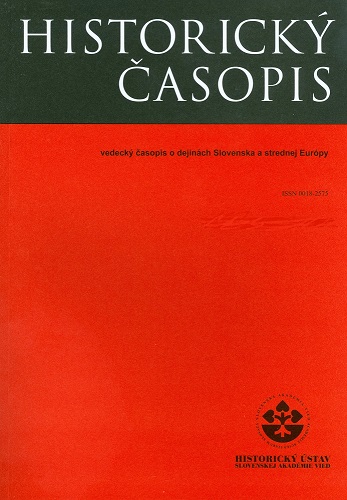Marginalizované skupiny v stredovekom a ranonovovekom Uhorsku
Marginalized Groups in Medieval and Early Modern Hungary
Author(s): Blanka SzeghyováSubject(s): History, Social history, Modern Age
Published by: SAV - Slovenská akadémia vied - Historický ústav SAV
Keywords: Marginalized groups; Social margin; Social exclusion/marginalization; Segregation; Stigmatization; Criminalization; Infamy; Poverty; Jews; Gypsies/Roma
Summary/Abstract: SZEGHYOVÁ, Blanka. Marginalized Groups in Medieval and Early Modern Hungary. Historický časopis, 2022, 70, 4, pp. 665–713, Bratislava.The study presents the history of marginalized groups, the theoretical background and a brief historiographical overview. Marginalized groups are collectively referred to as those that have limited opportunities for employment and are excluded from certain spheres of society. The defining criterion in identifying particular marginalized groups is the judgemental view of the majority or dominant society. Historians classify people on the margins into different categories according to certain characteristics such as extreme poverty, a vagrant or nomadic way of life, the pursuit of dishonest or defamed professions, criminal activities, as well as physical and mental disabilities and affiliation with religious or ethnic minorities. The study focuses on four main phenomena associated with marginalization – poverty, infamy, criminality and minority ethnicity with the examples of Roma and Jews. Marginalization took various forms, from demonstrations of disgust, hostility and physical violence, to segregation, stigmatization, legislative measures that criminalized certain groups, to their persecution and physical elimination. Apart from poverty, the main reasons for marginalization were prejudices, superstitions, myths and stereotypes, as well as intolerance and fear of the unknown, the strange and the other, that could be intertwined with rational dread of contagious diseases or hostile intentions.
Journal: Historický časopis
- Issue Year: 70/2022
- Issue No: 4
- Page Range: 665-713
- Page Count: 49
- Language: Slovak

